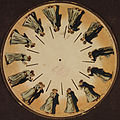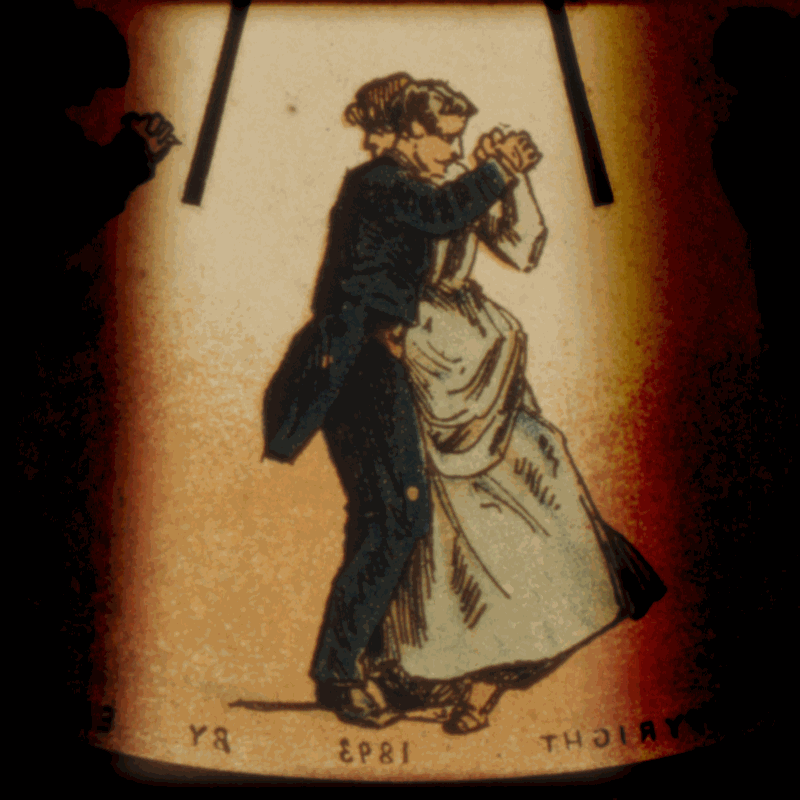Early examples of attempts to capture the phenomenon of motion into a still drawing can be found in paleolithic cave paintings, where animals are depicted with multiple legs in superimposed positions, clearly attempting to convey the perception of motion.
The phenakistoscope, zoetrope and praxinoscope, as well as the common flip book, were early animation devices to produce movement from sequential drawings using technological means, but animation did not develop further until the advent of motion picture film.
The first animated film was Humorous Phases of Funny Faces (1906) by newspaper cartoonist J. Stuart Blackton, one of the co-founders of the Vitagraph Company. In the film, a cartoonist's line drawings of two faces were 'animated' (or came to life) on a blackboard. The two faces smiled and winked, and the cigar-smoking man blew smoke in the lady's face; also, a circus clown led a small dog to jump through a hoop. The first animated cartoon (in the traditional sense, i.e. on film) was "Fantasmagorie" by the French director Émile Cohl. Released in 1908.
One of the very first successful animated cartoons was "Gertie the Dinosaur" by Winsor McCay. It is considered the first example of true character animation.
In the 1930s to 1960s, theatrical cartoons were produced in huge numbers, and usually shown before a feature film in a movie theater. MGM, Disney, Paramount and Warner Brothers were the largest studios producing these 5 to 10-minute "shorts".
Competition from television drew audiences away from movie theaters in the late 1950s, and the theatrical cartoon began its decline. Today, animated cartoons are produced mostly for television.




Posting Komentar